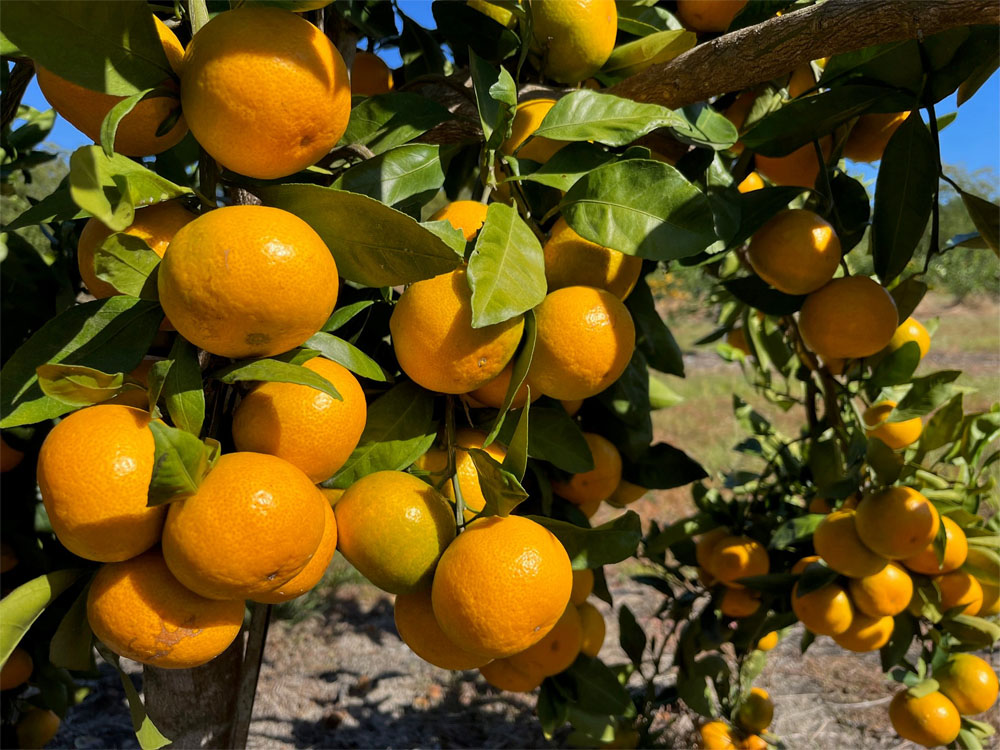For years, University of Georgia plant breeder Scott NeSmith has created new blueberry varieties for the commercial market. Now, he has bred one just for home gardeners.
Blue Suede is a Southern highbush blueberry for edible home landscapes, said Nesmith, a horticulturist with the UGA College of Agricultural and Environmental Sciences.
It produces flavorful, large, light-blue berries, and performs well in USDA Hardiness zones 6a through 9a.
“It bears attractive, very edible fruit and should look nice as a landscaping plant, too,” he said. “It has nice fall foliage color.”
Bred especially for home gardeners
Blue Suede is exclusively licensed to McCorkle Nursery, which plans to introduce it as part of their Gardener’s Confidence Collection early next year.
But isn’t a berry just a berry? NeSmith says he has to consider an entirely different list of characteristics when he breeds a blueberry plant for the commercial market.
“Commercial plants have to meet certain standards for several reasons, including the fact that berries have to travel long distances,” he said. “Yield is another factor. Commercial growers like all the berries of one variety to ripen at once, and then the next variety to come on. Home gardeners like to pick a bowlful at a time.”
Blue Suede has a “protracted ripening period,” he said, allowing harvest over a longer period of time.
Commercial berries have to survive shipping
Commercial growers also worry about problems like berry scarring. If a berry attaches to the plant, an open scar is created when it’s picked.
“You can’t have berries that leak and ooze while they are being shipped to the market,” he said. “But in a home setting, it doesn’t matter because you are going to eat them right away.”
When adding blueberry plants to your home landscape, Nesmith says to set aside the first year as a growing year for the plant. “You may see a small amount of fruit the second year, but the third year will bring a good blueberry crop,” he said.
Varieties bred for home planting like Blue Suede are designed to stand alone in the landscape. They are self-fruiting and do not require other plants for pollination.
“If you are a home consumer who wants to plant 10 to 15 blueberry bushes and create a patch, you may want to select a standard commercial variety,” NeSmith said.
Garden centers supplied by McCorkle’s
McCorkle Nurseries is promoting Blue Suede as a deck or patio container plant.
“It’s perfect for people who live in condominiums or apartments and don’t have a space to plant more than one plant,” said Mike Sikes, a horticulturist with McCorkle Nurseries. “It’s perfect for all seasons, too. You can enjoy the beautiful colored foliage in the fall, green leaves in the winter, flowers in the spring and delicious berries in the summer.”
More to come
Blue Suede is the first UGA edible ornamental blueberry release, but it won’t be the last, Nesmith said. There are plans to breed and release blueberry plants that produce a variety of different traits.
“We are looking at one plant that produces a berry that turns yellow, orange and then kinda black,” he said. “They will all be very edible, very sweet and attractive in a landscape. One of our goals is to produce a plant that doesn’t just look like a stick most of the year.”





